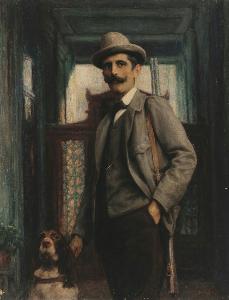Giovanni Battista Ciolina
Giovanni Battista Ciolina
Place: Toceno
Born: 1870
Death: 1955
Biography:
Giovanni Battista Ciolina was an Italian neo-impressionist and divisionist painter, born in Toceno, Italy in 1870 and died in 1955. He studied at the Rossetti Valentini Art School in Santa Maria Maggiore and later at the Scuola libera del nudo at the Accademia di Belle Arti in Venice.
Early Life and Training
Ciolina's artistic journey began at a young age, and he was largely influenced by the French art of the era. He became close friends with other future painters such as Carlo Fornara, Gian Maria Rastellini, and Lorenzo Peretti Junior. In the late 1880s, he received a two-year scholarship to attend the Scuola libera del nudo at the Accademia di Belle Arti in Venice.
Artistic Style and Career
Ciolina's artistic style was characterized by his use of **divisionism** and **neo-impressionism**. He was known for painting landscapes and scenes of countryside in **plein air**, often using bold colors and impasto techniques. His paintings, such as Portrait of Giuseppe Minoli, showcased his ability to capture the beauty of everyday life. Some notable exhibitions featuring Ciolina's work include:
- Giovanni Battista Ciolina – Umanità e paesaggi della Val Vigezzo: Museo del Paesaggio, Pallanza, 1986
- Una scuola di pittura in Val Vigezzo: 1881-1919: Turin/Novara, 1990
- Carlo Fornara. Un maestro del divisionismo: Trento, 1998
Influence and Legacy
Ciolina's work has been influenced by various art movements, including **Les Nabis** and **Op Art**. His use of color and light has been compared to that of other notable artists, such as Victor Vasarely. For more information on Ciolina's artistic style and influences, visit the Giovanni Battista Ciolina page on Wikioo.org. The Venetian Painting Art Movement, which emerged during the Italian Renaissance, also had a significant impact on Ciolina's work. This movement, characterized by its use of color and light, can be seen in the works of artists such as Giovanni Bellini and Titian. For more information on this movement, visit the Venetian Painting Art Movement page on Wikioo.org. For a comprehensive overview of Ciolina's life and work, visit his Wikipedia page. Additionally, the Giacomo Balla page on Wikioo.org provides insight into the Futurist movement and its influence on Ciolina's work.

